Complete Solutions to Multiple Correct of chapter RIGID BODY DYNAMICS 2 of Class 11 book with complete answers and questions
| Class 11 | PHYSICS |
| Chapter | RIGID BODY DYNAMICS 2 |
| CENGAGE PHYSICS | Multiple Correct |
| Number Of Questions | 26 |
| Academic Year | 2023-24 |
A ring rolls without slipping on the ground. Its centre `C` moves with a constant speed `u.P` is any point on the ring. The speed of `P` with respect to the ground is `v`.
View SolutionA uniform disc is rotating at a constant speed in a vertical plane about a fixed horizontal axis, passing through the centre of the disc. A piece of disc from its rim detaches itself from the disc at the instant when it is, on the same horizontal with the centre of the disc and moving upwards. lien about the fixed axis, the angular speed of the
View SolutionTwo wheels `A` and `B` are released from rest from points `X` and `Y` respectively on an inclined plane as shown in the figure. Which of the following statement(s) is/are incorrect?
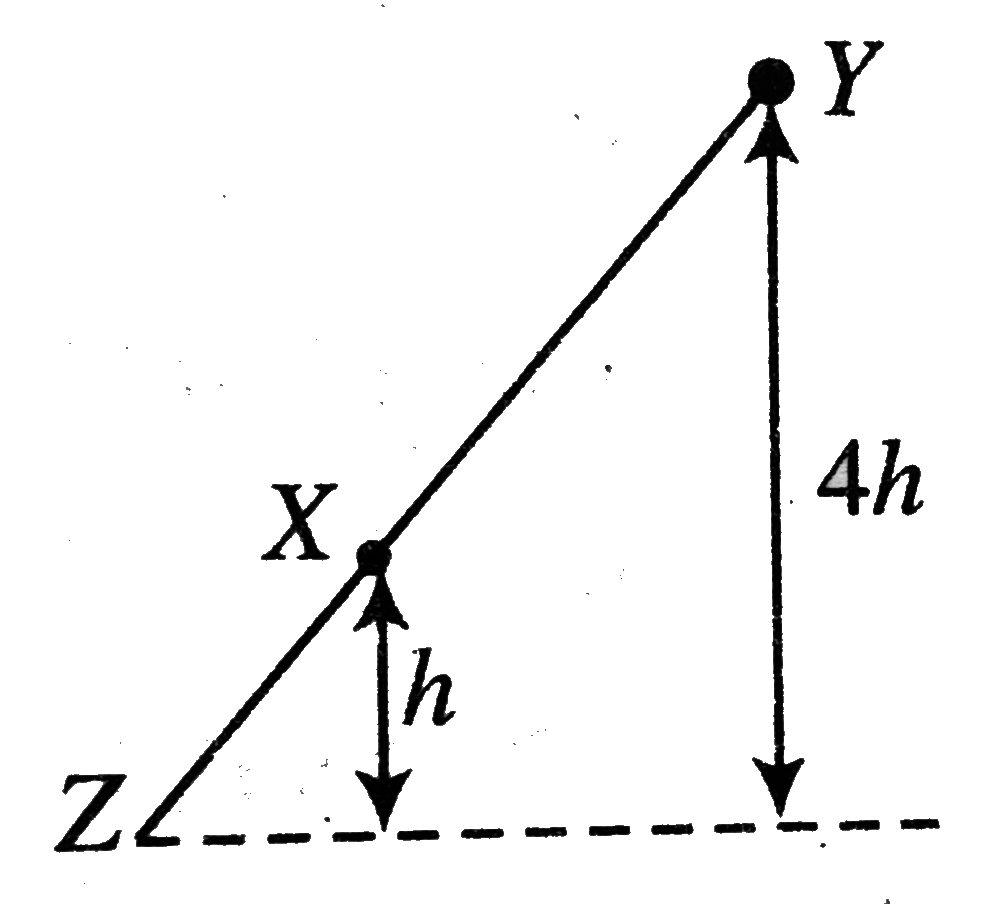
View SolutionA solid sphere is given an angular velocity `omega` and kept on a rough fixed incline plane. The choose the correct statement.

View SolutionA skater rotating about a vertical axis pulls her arms inward. Ignoring all frictional effects, which of the following statements are true? Denote the magnitude of her angular velocity by `omega`, the magnitude of her angular momentum by `L`, and her kinetic energy by `E_(k)`.
View SolutionThe motion of a sphere moving on a rough horizontal surface changes from pure sliding (without rolling) to pure rolling (without slipping). In this process, the force of friction
(`i`) intially acts opposite to the direction of motion and late in the direction of motion
(`ii`) cause linear retardation
(`iii`) causes angular acceleration
(`iv`) stops acting when pure rolling begins
View Solution
A uniform circular ring rolls without slipping on a horizontal surface. At any instant, its position is as shown in the figure. Then
View SolutionA wheel `A` starts rolling up a rough inclined plane and another identical wheel `B` starts rolling up a smooth plane having same inclination with the horizontal. If initial velocity of both the wheels is same then:
View SolutionFigure shows a spool with thread wound on it placed on a smooth plane inclined at angle from horizontal. The spool has mass m, edge radius `R`, and is wound up to a radius r. its moment of inertia about its own axis is `I`. The free end of the thread is attached as shown in the figure. So that the thread is parallel to the inclined plane. `T` is the tension in the thread. Which of the following is correct?

View SolutionA lawn roller in the form of a thin-walled hollow cylinder of mass `M` is pulled horizontally with a constant horizontally force `F` applied by a handle attached to the axle. If it rolls without slipping. Find the acceleration and the friction forces.
View SolutionIn the situation given, a force `F` is applied at the top of sphere. Study following statements.
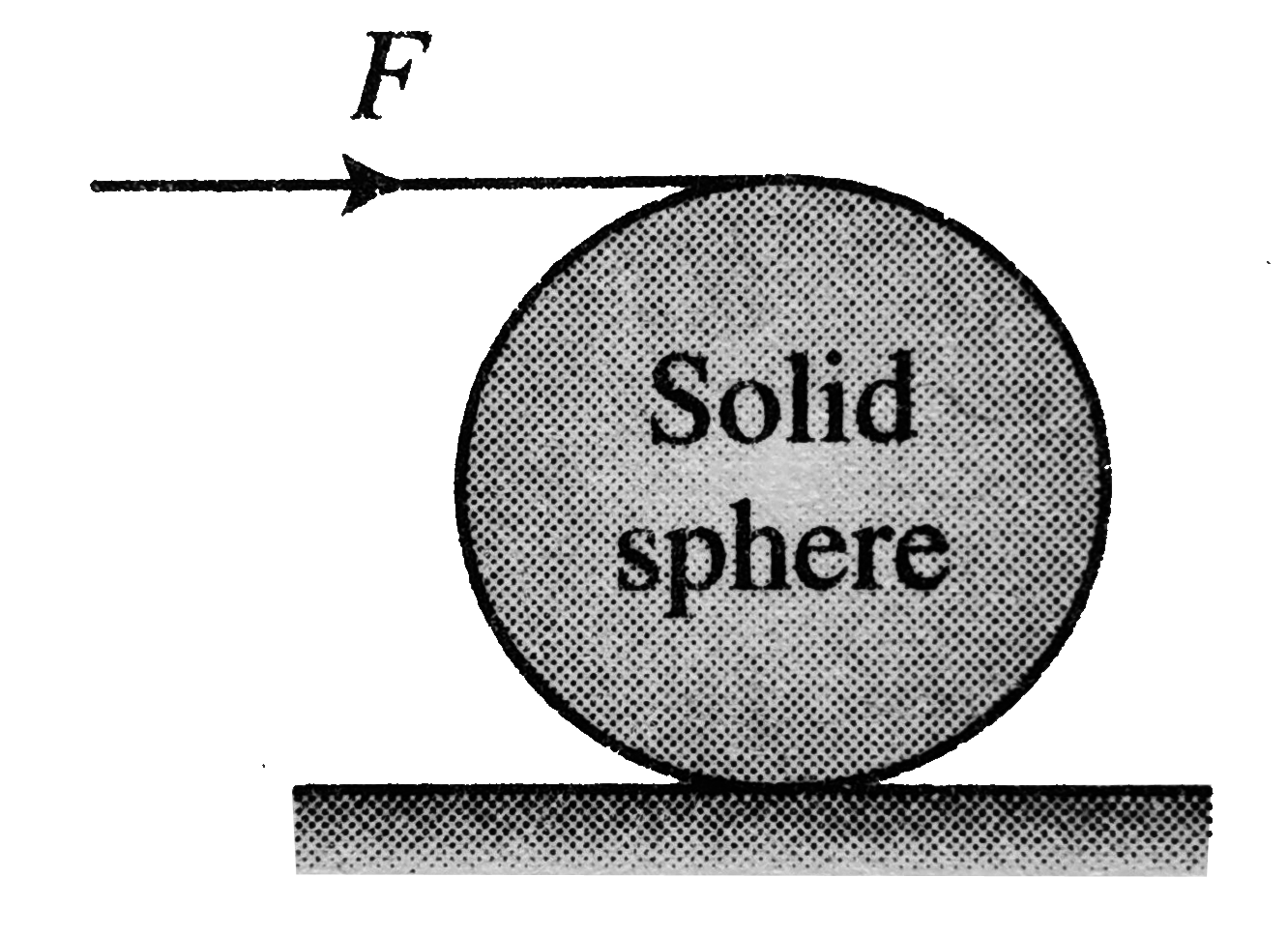
View SolutionA stepped cylinder having mass `50 kg` and a radius of gyration (`K`) of `0.30 m`. The radii `R_(1)` and `R_(2)` are respectively `0.3 m` and `0.6 m`. A pull `T` equal to `200 N` is exerted on the rope attached to inner cylinder. The coefficient of static and dynamic friction between cylinder and ground are `0.1` and `0.08` respectively.
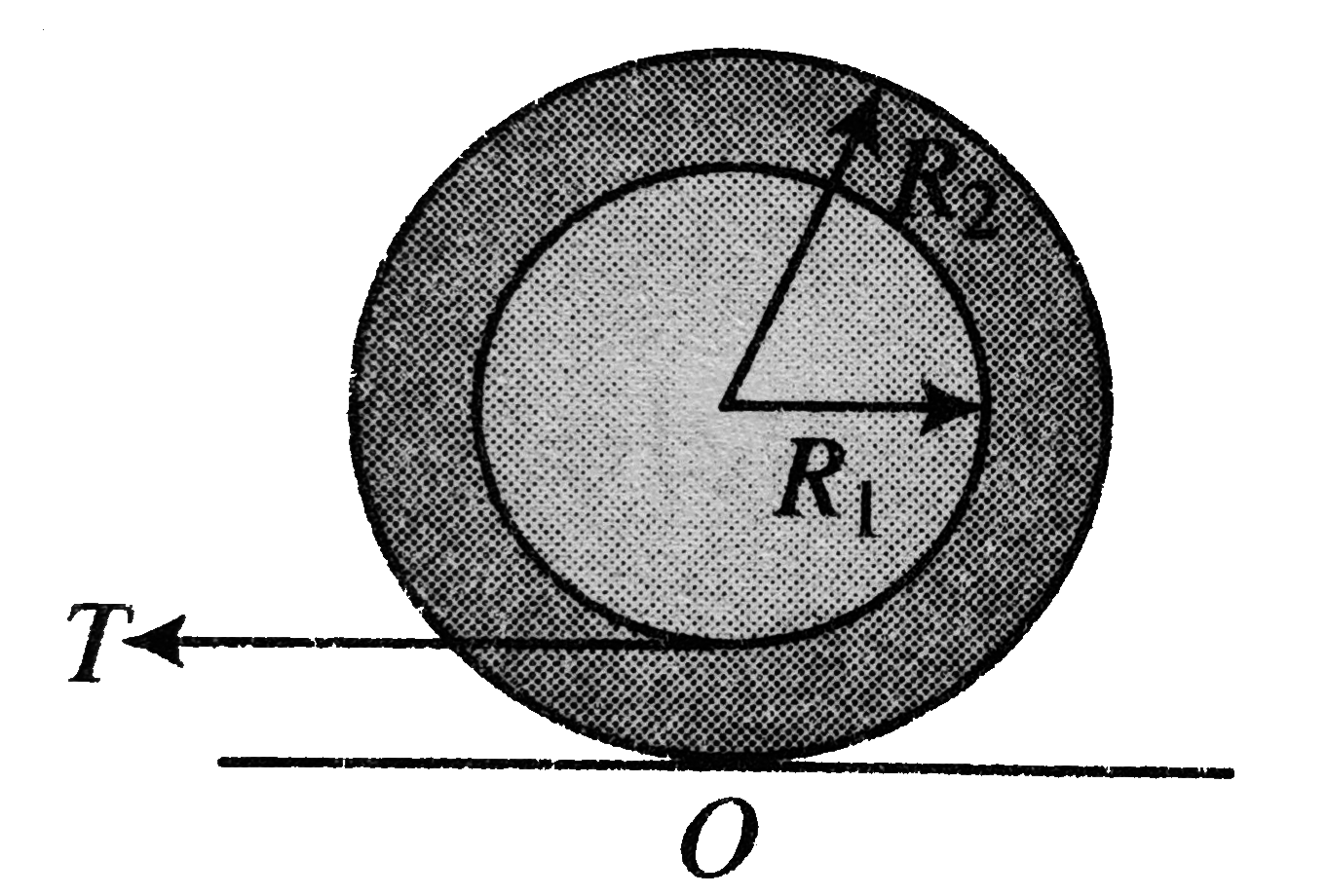
View SolutionStatement I: A disc is allowed to roll purely on an inclined plane as shown in Fig. A force `F` parallel to the incline and passing through the centre of the disc acts which remains constant during the motion.
It is possible that for certain values of `F`, the friction on the disc is acting along downward direction and for certain other values of `F`, the friction on the disc be acting along upward direction and there is no other possibility.
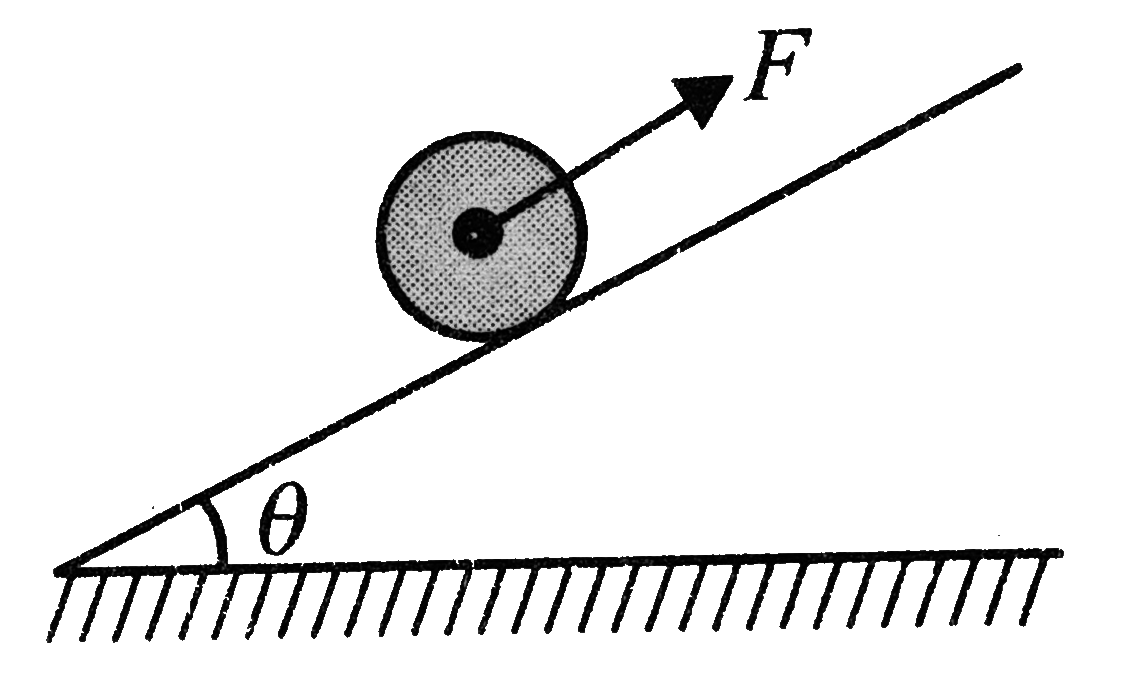
Statement II: The friction (if acting) will be static and not kinetic in nature.
View SolutionMany great rivers flow toward the equator. The sediments that they carry, increases the time of rotation of the earth about its own axis.
The angular momentum of the earth about its rotation axis is conserved.
View SolutionThe mass of a body cannot be considered to be concentrated at the centre of mass of the body for the purpose of computing its moment of inertia.
For then the moment of inertia of every body about an axis passing through its centre of mass would be zero.
View SolutionA ladders is more likely to slip when a person is near the top than when he is near the bottom.
The friction between the ladder and floor decreases as he climbs up.
View SolutionA solid sphere rolling on a rough horizontal surface. Acceleration of contact point is zero.
A solid sphere can roll on the smooth surface.
View SolutionA disc is rolling on an inclined plane without slipping. The velocity of centre of mass is `V`. These other point on the disc lie on a circular are having same speed as centre of mass.
When a disc is rolling on an inclined plane. The magnitude of velocities of all the point from the contact point is same, having distance equal to radius `r`.
View Solution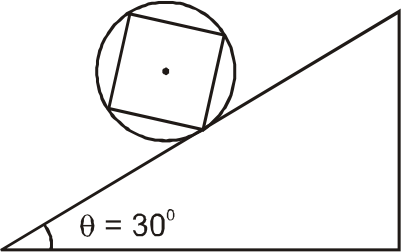
Four identical uniform rods of mass `M=6kg` each are welded at their ends to form a square and then welded to a uniform ring having mass m=4kg & radius R=1m the system is allowed to roll down on the rough and fixed incline of inclination `theta=30^(@)` (assume no sliding anywhere)
Q. The moment of inertia of system about the axis of ring will be-
View Solution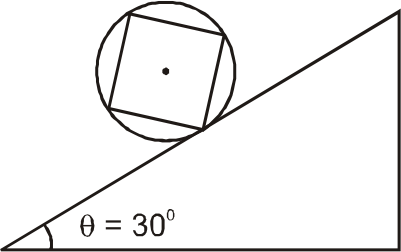
Four identical uniform rods of mass `M=6kg` each are welded at their ends to form a square and then welded to a uniform ring having mass m=4kg & radius R=1m the system is allowed to roll down on the rough and fixed incline of inclination `theta=30^(@)` (assume no sliding anywhere)
Q. The acceleration of centre of mass of system is
View Solution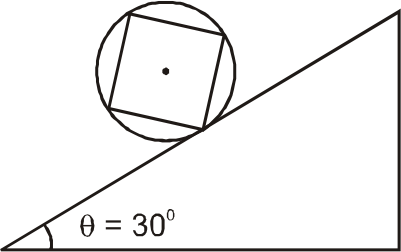
Four identical uniform rods of mass `M=6kg` each are welded at their ends to form a square and then welded to a uniform ring having mass m=4kg & radius R=1m the system is allowed to roll down on the rough and fixed incline of inclination `theta=30^(@)` (assume no sliding anywhere)
Q. The minimum value of coefficient of friction to prevent slipping is-
View SolutionFigure shows a uniform smooth solid cylinder `A` of radius `4 m` rolling without slipping on the `8 kg` plank which, in turn, is supported by a fixed smooth surface. Block `B` is known to accelerate down with `6 m//s^(2)` and block `C` moves down with acceleration `2 m//s^(2)`.
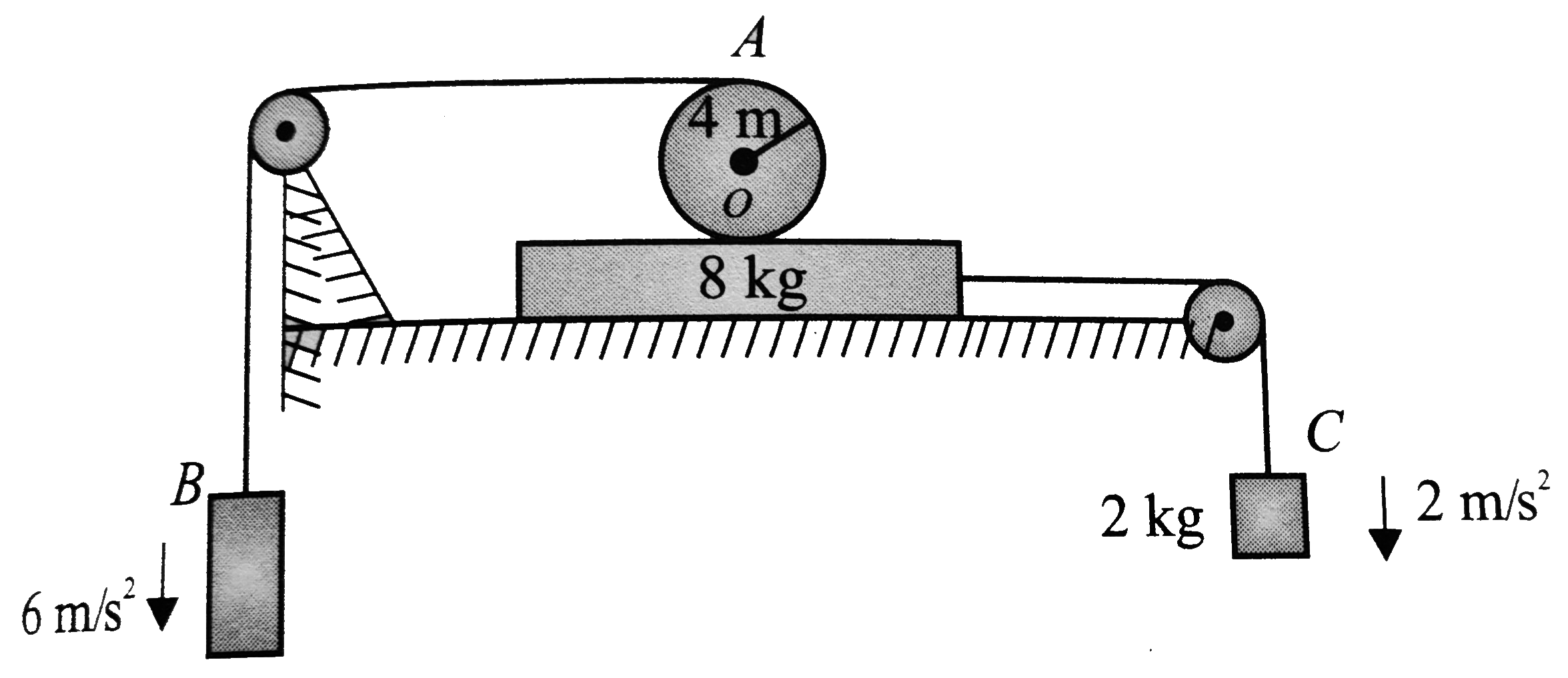
What is the angular acceleration of the cylinder?
View SolutionFigure shows a uniform smooth solid cylinder `A` of radius `4 m` rolling without slipping on the `8 kg` plank which, in turn, is supported by a fixed smooth surface. Block `B` is known to accelerate down with `6 m//s^(2)` and block `C` moves down with acceleration `2 m//s^(2)`.
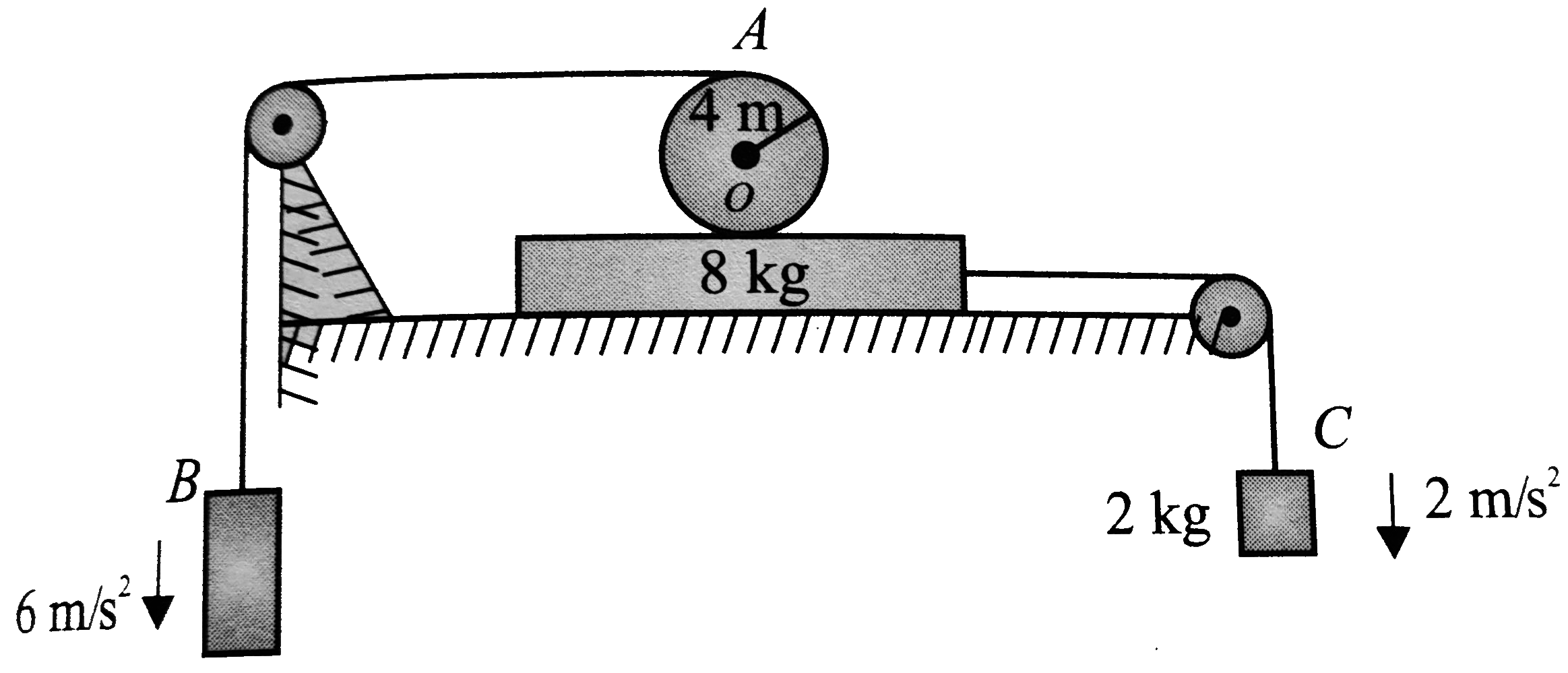
What is the ratio of the mass of the cylinder to the mass of block `B`?
View SolutionFigure shows a uniform smooth solid cylinder `A` of radius `4 m` rolling without slipping on the `8 kg` plank which, in turn, is supported by a fixed smooth surface. Block `B` is known to accelerate down with `6 m//s^(2)` and block `C` moves down with acceleration `2 m//s^(2)`.
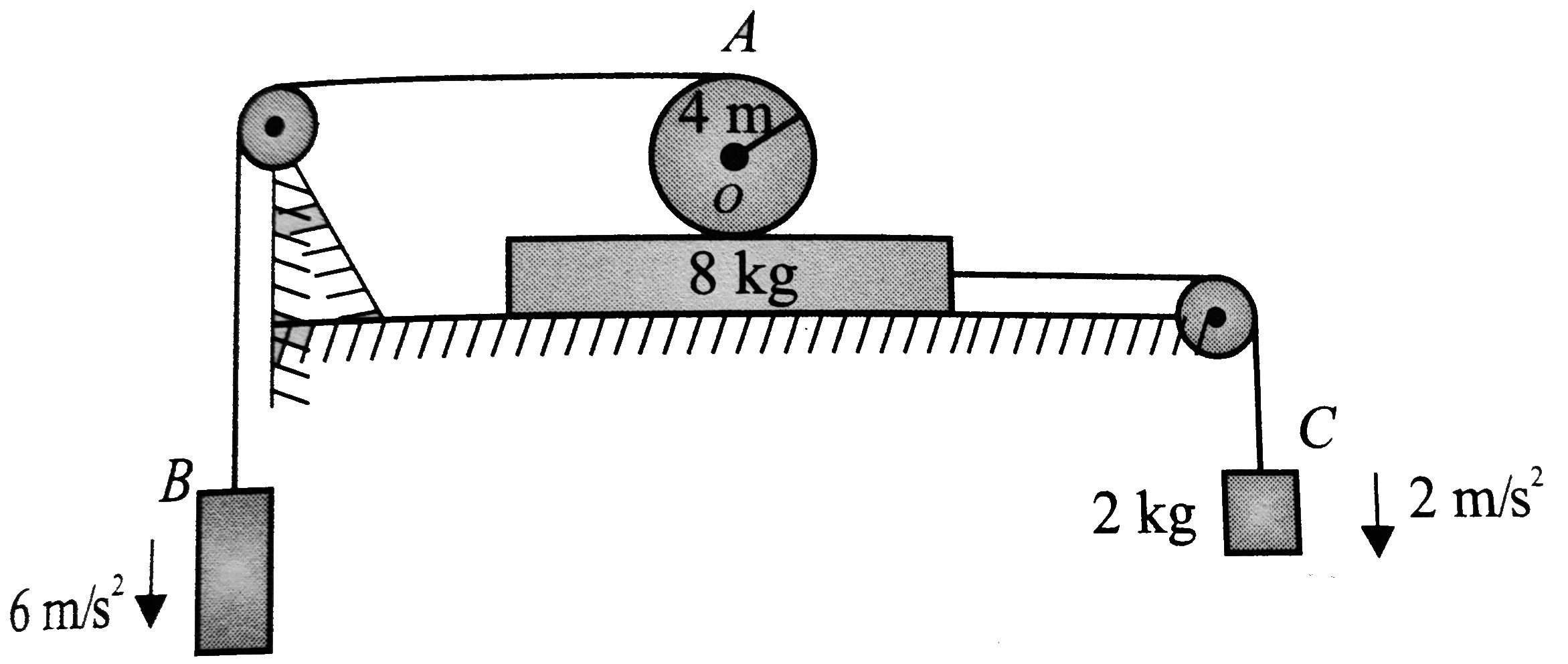
If unwrapped length of the thread between the cylinder and block `B` is `20 m` at the beginning, when the system was released from rest, what would it be `2 s` later
View SolutionA man of mass `100 kg` stands at the rim of a turtable of radius `2 m` and moment of inertia `4000 kgm^(2)` mounted on a vertical frictionless shaft at its centre. The whole system is initially at rest. The man now walks along the outer edge of the turntable with a velocity of `1m//s` relative to the earth
a. With what angular velocity and in what direction does the turntable rotate?
b. Through what angle will it have rotated when the man reaches his initial position on the turntable?
c. Through what angle will it have rotated when the man reaches his initial position relative to the earth?
View SolutionA man of mass `100 kg` stands at the rim of a turtable of radius `2 m` and moment of inertia `4000 kgm^(2)` mounted on a vertical frictionless shaft at its centre. The whole system is initially at rest. The man now walks along the outer edge of the turntable with a velocity of `1m//s` relative to the earth
a. With what angular velocity and in what direction does the turntable rotate?
b. Through what angle will it have rotated when the man reaches his initial position on the turntable?
c. Through what angle will it have rotated when the man reaches his initial position relative to the earth?
View Solution
Multiple Correct questions and complete solutions for chapter RIGID BODY DYNAMICS 2 of CENGAGE PHYSICS (HINGLISH) of Class 11